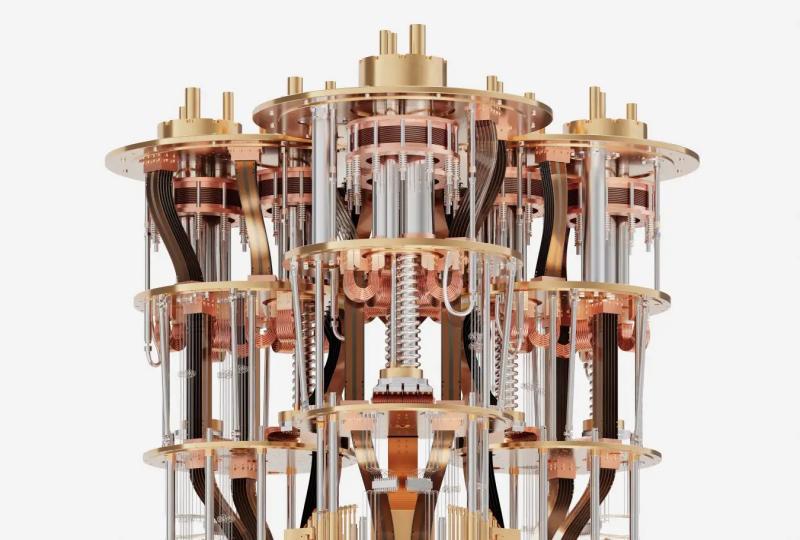Quantum Superposition: Quantum Computing Speed's Secret
2025.03.16 · Blog
What makes quantum computers vastly different from classical computers? The answer lies in quantum superposition—a principle that allows qubits to exist in multiple states simultaneously. This phenomenon forms the backbone of quantum computing, enabling it to solve complex problems at speeds unattainable by classical systems.
In this article, we dive deep into the science of quantum superposition, its role in quantum computers, and the transformative impact it has across industries like cryptography, optimization, and quantum chemistry.
What is Quantum Superposition in Quantum Computing?
Quantum Superposition in quantum computing refers to a fundamental concept in quantum mechanics where a quantum system, such as a qubit, can exist in multiple states simultaneously, rather than just one. This is unlike classical bits in traditional computing, which can only be in one of two states—either 0 or 1—at any given time.
In quantum computing, superposition allows a qubit to represent both 0 and 1 at the same time, with varying probabilities. This ability to exist in multiple states at once enables quantum computers to perform many calculations simultaneously, providing the potential for solving complex problems much faster than classical computers.
For example, if you had two classical bits, they could only represent four possible combinations (00, 01, 10, and 11). But with two qubits in superposition, the quantum system could represent all four combinations at once, significantly increasing computational power.
Quantum superposition is crucial for quantum algorithms and enhances the parallelism inherent in quantum computing, making it a key resource for tackling problems in fields like cryptography, optimization, and material science.
How Quantum Superposition Works in Quantum Computing
Here’s how quantum superposition works in quantum computing:
1. Qubit Representation: A qubit is represented by a vector in a two-dimensional complex vector space. This vector can be a combination (or superposition) of two basis states, typically labeled as |0⟩ and |1⟩. Mathematically, a qubit can be expressed as:
![]()
Here, α\alphaα and β\betaβ are complex numbers that represent the probability amplitudes of the qubit being in the states |0⟩ and |1⟩, respectively.
The square of their magnitudes (∣α∣2 and ∣β∣2) gives the probabilities of measuring the qubit in either state when observed.
2. Superposition: In superposition, the qubit doesn't have a definite value until it is measured. Before measurement, the qubit exists in a mix of both 0 and 1 states. For example, a qubit might have a 50% chance of being measured in state |0⟩ and a 50% chance of being measured in state |1⟩.
3. Multiple Qubits: When multiple qubits are involved, each qubit can be in superposition independently. This allows a quantum computer to represent a vast number of possible combinations of states simultaneously. For example, two qubits can be in superposition of all four combinations (00, 01, 10, and 11) at once, leading to exponential growth in computational possibilities.
4. Quantum Interference: After applying quantum operations (gates) to qubits in superposition, the probabilities of different outcomes can interfere with each other, amplifying some results and canceling out others. This interference is crucial for quantum algorithms to work efficiently.
5. Collapse upon Measurement: When you measure a qubit in superposition, the wave function "collapses" to one of its basis states (either |0⟩ or |1⟩), with the probabilities determined by the amplitude values α\alphaα and β\betaβ. This is a probabilistic process, meaning the exact outcome can’t be predicted beforehand, only the likelihood.
Impact on Quantum Computing: Quantum superposition allows quantum computers to explore many possible solutions to a problem simultaneously. This parallelism is what gives quantum computers their potential to solve certain complex problems, such as optimization, cryptography, and simulation of quantum systems, much faster than classical computers.
Applications of Quantum Superposition
1. Cryptography:
Algorithms like Shor’s Algorithm use superposition to break classical encryption by factoring large numbers.
Quantum Key Distribution (QKD) ensures secure communication using superposition principles.
2. Optimization Problems:
Solve real-world challenges in logistics, portfolio management, and scheduling.
Example: Grover’s Algorithm leverages superposition to accelerate database searches.
3. Drug discovery
Simulate molecular structures and chemical reactions to speed up drug discovery by accurately modeling protein interactions.
4. Artificial Intelligence (AI):
Optimize training processes for AI models.
Example: Use superposition to evaluate multiple configurations of neural networks simultaneously.
5. Financial Modeling:
Perform Monte Carlo simulations for risk analysis and option pricing with unprecedented speed.
Addressing Challenges in Quantum Superposition in Quantum Computing
Despite its promise, superposition in quantum computing faces several challenges:
1. Decoherence: Environmental noise disrupts superposition, making error correction essential.
2. Error Correction: Techniques like surface codes help preserve superposition during computation.
3. Hardware Scalability: Building stable, large-scale quantum systems capable of maintaining superposition remains a significant technical hurdle.
Why Quantum Superposition Matters in Quantum Computing
Quantum superposition is the key to quantum computing’s unparalleled capabilities. By allowing quantum systems to process exponentially more information than classical systems, superposition powers breakthroughs in:
Climate Modeling: Simulating complex systems to predict environmental changes.
Supply Chain Optimization: Enhancing efficiency in global logistics networks.
Secure Communications: Advancing cryptographic methods to resist cyber threats.
The Future of Quantum Superposition in Quantum Computing
The future of quantum superposition in quantum computing lies in:
Improved Hardware: Companies like IBM, Google, and SpinQ are working to develop scalable, noise-resistant quantum systems.
Error-Resilient Algorithms: Research into quantum error correction is paving the way for more robust computations.
Wider Access: Cloud platforms such as IBM Quantum, Amazon Braket, and Microsoft Azure Quantum are democratizing access to quantum technology.
As these advancements unfold, quantum superposition will redefine what is computationally possible.
Conclusion
Quantum superposition is the bedrock of quantum computing’s power. By enabling qubits to exist in multiple states simultaneously, it opens the door to solving problems that classical computers cannot tackle efficiently.
From cryptography to AI, the potential applications of superposition are boundless. As researchers address current challenges and quantum technology becomes more accessible, superposition will continue to drive the quantum revolution, transforming industries and scientific discovery alike.
Featured Content






